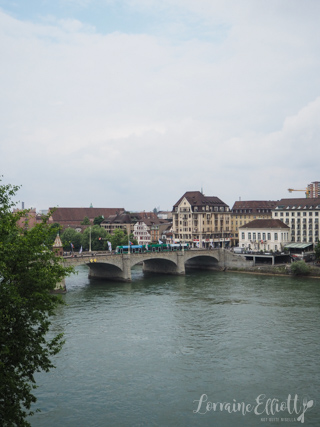
The Northwestern Swiss city of Basel is known for two things: culture or art and it is also home to some of the world's largest pharmaceutical companies. Its location along the Rhine River makes it one of the two main Swiss towns where residents commute to work by floating and swimming down the river during Summer. Come along as we spend 24 hours in the city of art and go on a chocolate tour of Basel and try some of Basel's most delicious specialties.
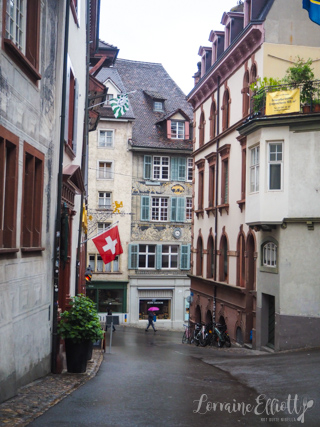
Which country eats the most chocolate per year? It may not surprise anyone to know that the Swiss consume the most chocolate per annum averaging around 11kg/24lbs per person. We are on a chocolate tour of Basel with guide Stephanie Greinier of Xocotour Suisse. Her chocolate tours focus on small Swiss producers and chocolatiers including bean to bar chocolatiers and those that buy in couverture chocolate and create bars.
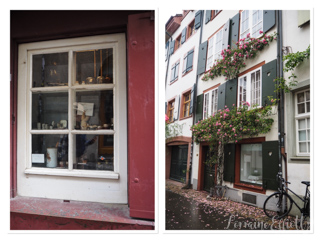
The tour starts in Muenster Square in front of the cathedral of Basel. Stephanie explains that Basel is the third most populous city in Switzerland after Zurich and Geneva and its location near the point where the Swiss, French and German borders meet (Basel also has suburbs in France and Germany) means that there has been a long history of information exchange.

She hand us a piece of the local biscuit called Laggerli that is unique to Basel. This soft biscuit is studded with dried citron and is usually served at Christmas. Here in Basel it is coated in chocolate, naturally. It's perfect for this rainy day and we can easily imagine having this with a cup of tea or coffee.

We take a little walk and Stephanie sets up a little tasting for us. She explains how cacao beans come out of cacao pods and hands out cups of cacao juice, that's sweet slightly syrupy concoction whose fragrance is similar to lychee.
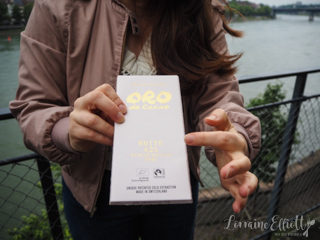
Stephanie explains, "Dark chocolate is made with three ingredients: cocoa mass, cocoa butter and sugar. If you're making milk chocolate you add milk powder to those three ingredients and if you're making a white chocolate you use cacao butter mix with milk powder and sugar but usually a white chocolate is mainly sugar and milk powder."
Our next tasting demonstrates a subtle difference between the two methods of fermentation of cacao beans: wooden basket fermentation or plantain leaves. Both bars are by Swiss brand Garçon. The taste difference is subtle but it's still discernible as the wooden box method chocolate has a tanginess at the end. We also try an interesting chocolate by Oro. Usually white chocolate has had vanilla added to it but this one does not and it tastes a pure cocoa butter with a very buttery texture.
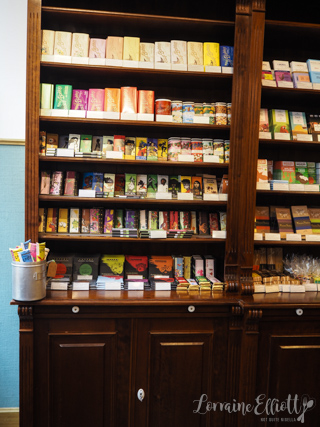
Our next stop is at Xocolatl store with a dizzying array of chocolate. They are known for their hot chocolate that comes in myriad varieties and we all try a cup made with water that really brings out the flavour of the chocolate. She shows us how some producers of Swiss chocolate put detailed information on the packaging disclosing information like conching time, temperature as well as tasting notes and pairing suggestions.
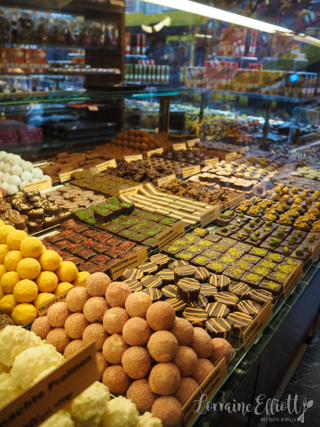
We then head to Schiesser for a taste of their Kirschstangeli. This Confiserie buys couverture chocolate and make truffles and bars. Kirschstangeli are handmade slender logs of crisp chocolate filled with kirsch and sugar syrup. They are then left for five days to crystallise. One bite into the crisp chocolate and sugary grains releases the kirsch. These Kirschstangeli are said to be the best in town.

Our next stop is at Beschle established in 1898. This unassuming bakery is known for their St Honore Beschle which is a ring sponge cake with caramelised almonds. But it's this bakery's chocolate that is everyone's favourite of the whole tour and unless you knew that they made chocolate you may actually bypass it in favour of the cakes.

We try a Lassi flavoured chocolate made with yoghurt, lemon cardamom that has a beautiful tang and creaminess to it like a lemon cheesecake. We also try some pistachio salt, ginger, and Matcha chocolate and they're all incredible, especially the Matcha that has a touch of lemon to it. Stephanie buys us some caraway seed topped biscuits called Fastenwähe. These are also a Basel specialty.
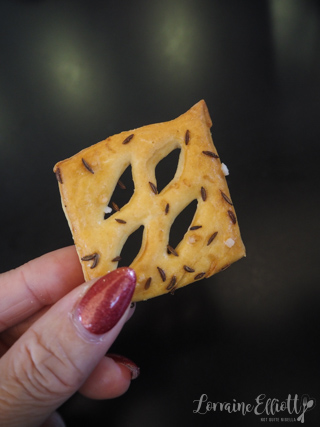
Our last stop is at Brandli where we have our last bite. It is an exotic fruit tea and ganache truffle. This exquisite little chocolate square despite how much chocolate we've eaten is polished off with a smack of the lips. Her tour is 95CHF/$120USD/$180AUD per person for a 2.5 hour tour with tastings and a gift.

After our chocolate tour and checking into our hotel, it's time for dinner. Tonight's dinner is at Restaurant Kunsthalle in the Old Town area of Basel. Kunsthalle means house of art and it was first established in 1878. The restaurant itself is a mini art museum.
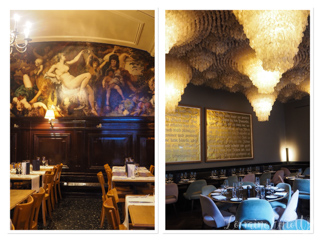
One room holds an enormous installation by Werner Panton made of thousands of shells. If the wind blows just so, it makes a calming, light melody. If the weather is warm head to the summer garden. Dubbed one the most beautiful garden in Basel it is remarkable because it is in the city but yet quiet.

Tonight we are trying a Swiss specialty, in particular from Basel and other German areas of Switzerland. Kalbshacktätschli means veal hash balls and these veal patties are shaped like flattened hamburger patties and paired with a creamy morel sauce as well as supple noodles. Whilst it may look plain and just like a hamburger patty the taste is so much more than that. The veal is has a wonderful soft and tender texture - it is almost like a tartar it is that luscious. The buttered noodles go wonderfully with it and there are perfectly cooked carrots as well. It's one of the best things I've eaten on this trip (which admittedly has been full of amazing food).
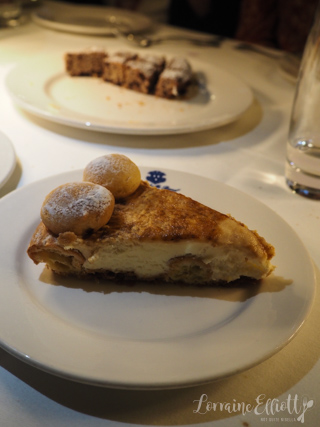
The dessert menu comes in the form of a dessert cart that crosses the restaurant. All of the desserts are made in house except for one: The Saint Honore pastry from Belsche Pastry shop. This is soft and with a great deal of fresh cream filling.
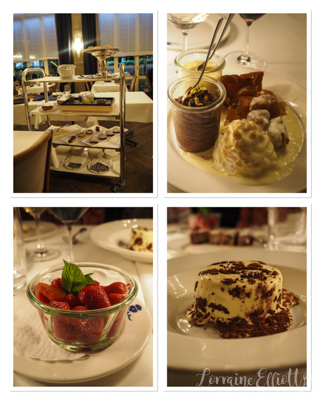
Tempted by the dessert trolley and wanting to try as many desserts are possible, we opt to try one of everything on the trolley between the 10 of us. The lemon tart is more sweet than tart while the tiramisu is a delicious version of the Italian dessert. There are also fresh strawberries, chocolate mousse and a flan pudding in a glass. The pick at the table is the apple cake with floating islands. And despite the amount of chocolate we've eaten today, our enthusiasm doesn't wane for dessert. It's a perfectly sweet ending to our stay in Basel.
Where We Stayed
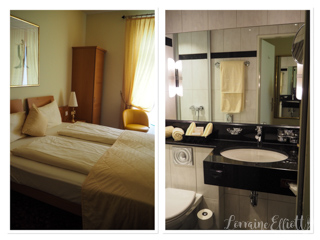
Our hotel was the GAIA Hotel Basel on Centralbahnstrasse 13, a 4 star hotel with a focus on sustainability. I had a comfortable, cosy room that was great for a one night stay. One of the hotel's main selling points is the location right across from the train station which gave us easy access to get our trains early the next morning.

The family run hotel actually comprises of three different buildings and my room was in the main building on the second floor. While the room was simple it had everything that I needed including a complimentary mini bar with organic products and an organic breakfast (I missed this in favour of a workout) but I really didn't spend a lot of time in my room as we were so busy exploring Basel.
So tell me Dear Reader, have you ever done a chocolate tour? Have you ever tried white chocolate without vanilla?
NQN was a guest of Tourism Switzerland but all opinions remain her own.


Reader Comments
Loading comments...Add Comment